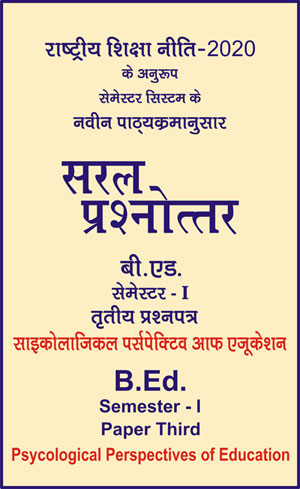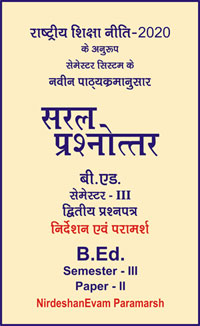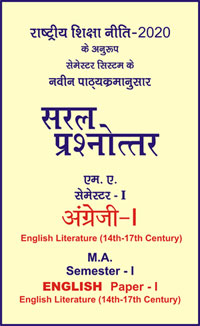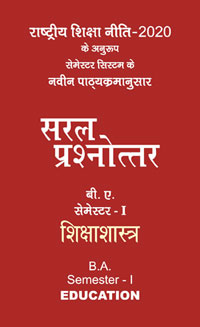|
बी एड - एम एड >> बी.एड. सेमेस्टर-1 प्रश्नपत्र-III - साइकोलाजिकल पर्सपेक्टिव आफ एजूकेशन बी.एड. सेमेस्टर-1 प्रश्नपत्र-III - साइकोलाजिकल पर्सपेक्टिव आफ एजूकेशनसरल प्रश्नोत्तर समूह
|
|
|||||||
बी.एड. सेमेस्टर-1 प्रश्नपत्र-III - साइकोलाजिकल पर्सपेक्टिव आफ एजूकेशन (अंग्रेजी भाषा में)
Question- Describe Two Factor Theory of Intelligence of Spearman.
Or
What is two factor theory of Intelligence ? Explain.
Answer-
Two Factor Theory (C.E. Spearman)
First Presentation : Spearman first presented his approach to intelligence in his article published in American Journal of Psychology in 1904 entitled “General Intelligence objectively determined and measured.” He presented his detailed theory of intelligence in his book The Nature of Intelligence and the Principles of Cognition, published in 1923 by Macmillan, London. Another significant work giving his views about intelligence was published in 1927 by Macmillan, New York, under the title “The Abilities of man.”
Two Factor Theory : Spearman presented his famous two factor theory of intelligence in the work entitled The Two Factor Theory of Intelligence, published in two volumes. In this work he was concerned with describing the nature of intelligence and how far it may be tested. According to him, a current approach to intelligence will be federative. This approach sees unity in difference. According to Spearman, federative theory is, “an eclectic approach” which is better than other approaches. He calls it two factor theory having general intelligence or ‘G’ and specific abilities or ‘S’. Later on, he developed a three factor theory in which specific types of abilities were called S1, S2, S3, S4 and so on. He found that Binet studied individual differences of native endowment. In it S factors were found correlative. According to Spearman, each S is different from others. Memory testing indicates another type of specific intelligence than learning. We find that in addition to ‘G’ and ‘S’, a radio mechanic is displaying a specific ability and so is a speaker but it would not achieve practical results attained by G. The mass of S is unlimited. Theoretically each individual demonstrates endless types of S. G on the other hand, is fixed and permanent. All actions are determined by both ‘G’ and ‘S’. ‘G’ varies from individual to individual but it is fixed in each person. We cannot change ‘G’ but we can improve ‘S’. This point has been used by critics against Spearman since it underrates the possibility of education.
Comparison of G and S : ‘G’ is the monarch though S are independent. Spearman sums up different problems involved in intelligence in his theory. His view was to judge intelligence by performance. He explained his theory with reference to analogies from politics. In politics one finds anarchic, oligarchic and monarchic approaches. These three approaches applied to intelligence give us the view that none of them explains behaviour. Spearman followed a path in between monarchic and anarchic theory. In his theory ‘G’ is universal and ‘S’ is individual. Later on, he accepted group factors. This modified view was popularised by Cyril Burette. Thus, in the ultimate analysis there are three factors, ‘G’, S and Group Factor.
|
|||||

 i
i 










